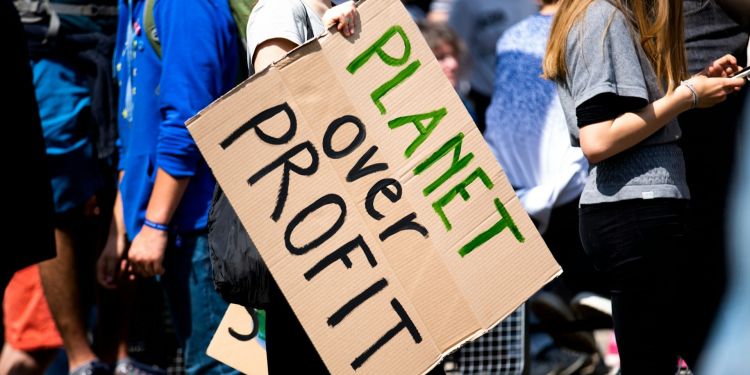Can degrowth affect climate change?

A new study explores whether reducing production and consumption growth could significantly contribute to resolving the climate crisis.
As the effects of climate change become more severe, some researchers disagree about the desirability and feasibility of further economic growth in high-income countries.
Recently, the case has been made for exploring a "degrowth" (or post-growth) strategy.
What is degrowth?
Degrowth entails reducing less-necessary forms of production and consumption rather than growing them.
Its goal is to reduce environmental pressures in a democratically planned way which improves equity and wellbeing.
Assessment reports by the Intergovernmental Panel on Climate Change (IPCC) have not yet featured mitigation scenarios with degrowth in high-income regions, because little quantitative research has been done on such scenarios.
In this study, researchers analyzed whether degrowth could help to enable ambitious climate mitigation.
They focused on a case study of Australia—a high-income, high-resource-use country.
Dr Paul Brockway at the School of Earth and Environment co-authored the study, titled ‘Downscaling down under: towards degrowth in integrated assessment models.’
Jarmo Kikstra at the International Institute for Applied Systems Analysis (IIASA) was research lead. The other co-authors were Jason Hickel (University of Barcelona and London School of Economics), Mengyu Li, Arunima Malik and Manfred Lenzen (all University of Sydney), Lorenz Keysser (University of Laussanne), Joeri Rogelj (IIASA and Imperial College London) and Bas van Ruijven (IIASA).
‘Downscaling down under’
The authors applied MESSAGEix – an integrated assessment model (IAM) – to project Australia’s future under a degrowth plan.
The team explored 51 scenarios, including projecting no growth in consumption and a reduction in consumption.
Although some degrowth modelling exists, the authors took a previously unexplored approach by applying different transitions to achieve a particular emissions reduction targets.
Dr Paul Brockway said: “Until now, degrowth has largely been explored outside of the Integrated Assessment Models (IAMs) which are the key modelling tools used for future global emissions projections.”
Jarmo Kikstra said: "Also under degrowth strategies, forms of decoupling are necessary. But these are structurally different dynamics that relate to a broad set of policies. A lot of new research is required to model such strategies, and we lay out different options to do so."
Reduced energy demand lowers the need to upscale technology
The study shows that reduced energy demand in lower GDP per capita lessens concerns about technological feasibility. This is because it reduces the need to upscale renewable energy projects.
Dr Paul Brockway said: “Reductions in energy use under a degrowth lens also reduce the need for renewable energy (eg wind and solar) and negative emissions technologies (eg carbon capture and storage), both of which have feasibility concerns over the rapid upscaling required under growth orientated systems.”
Meeting human needs and climate goals
Finally, the study also looks at the risk lower energy availability could have on providing decent living standards for all.
It shows the tradeoff between growth and inequality reduction, illustrating what corridors exist for meeting human needs and climate goals.
The authors highlight that further analysis is required to evaluate a complex, real-world degrowth transition scenario.
This should include understanding the sociocultural and economic feasibility of lower-growth pathways, as faster reductions in energy demand could affect people differently, depending on the policies in place.
Read ‘Downscaling down under: towards degrowth in integrated assessment models’ in Economics Systems Research.




